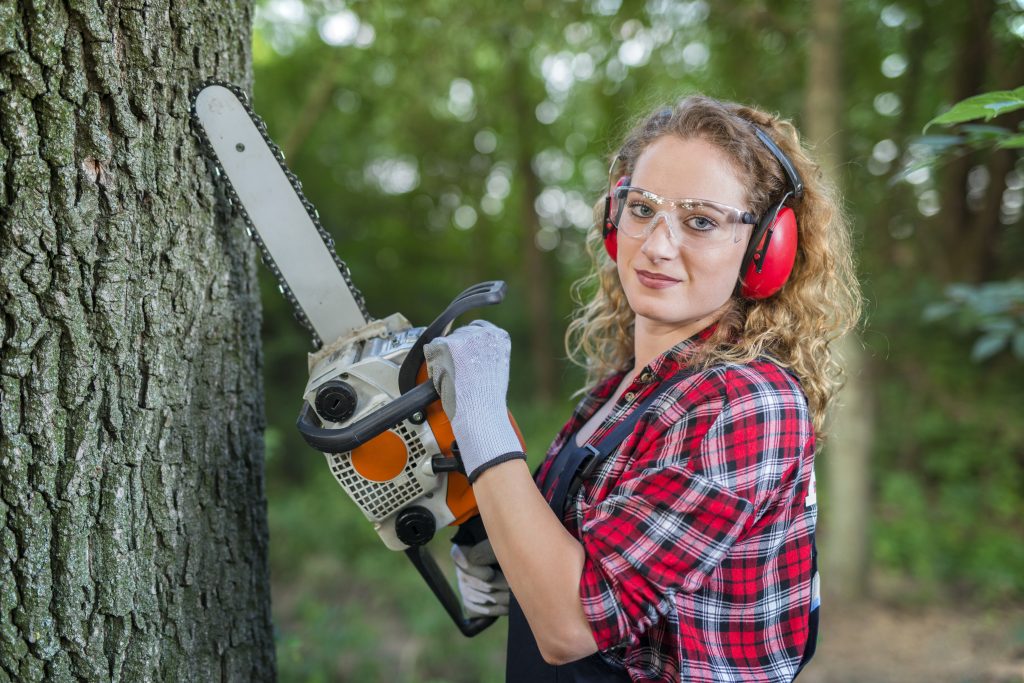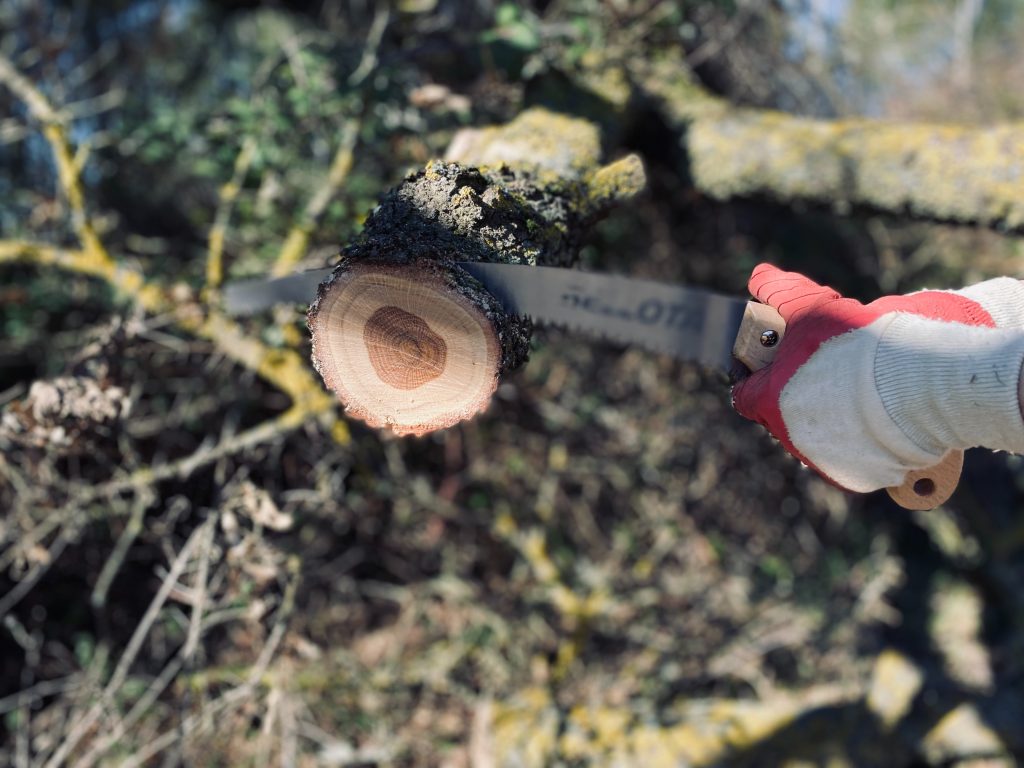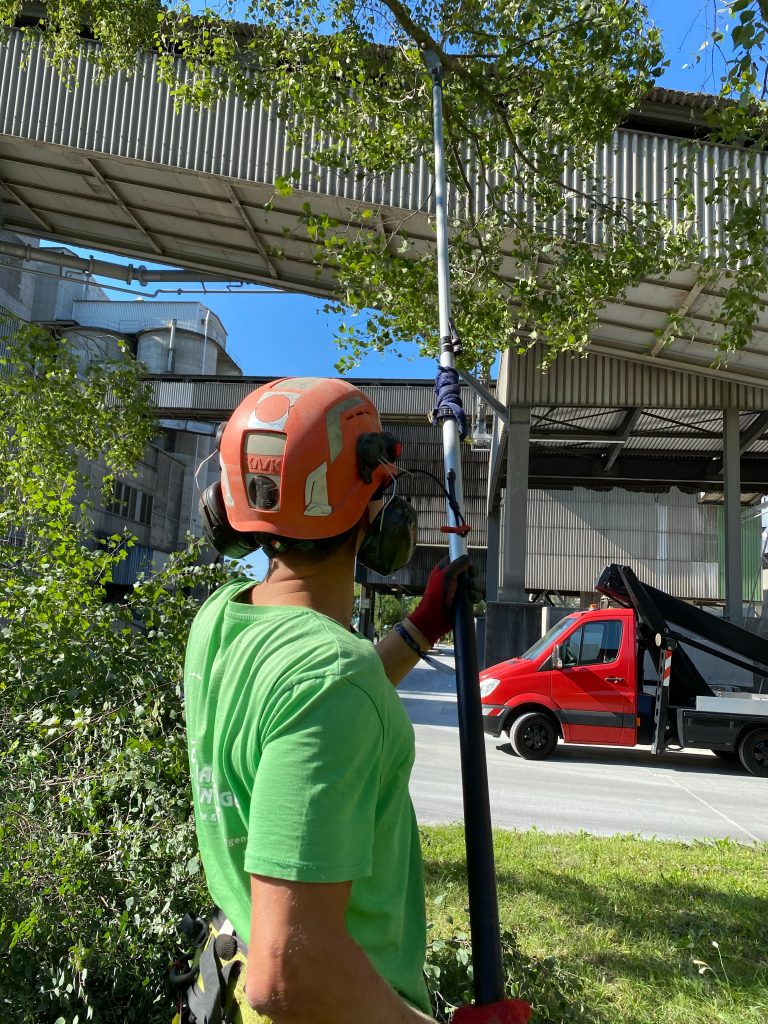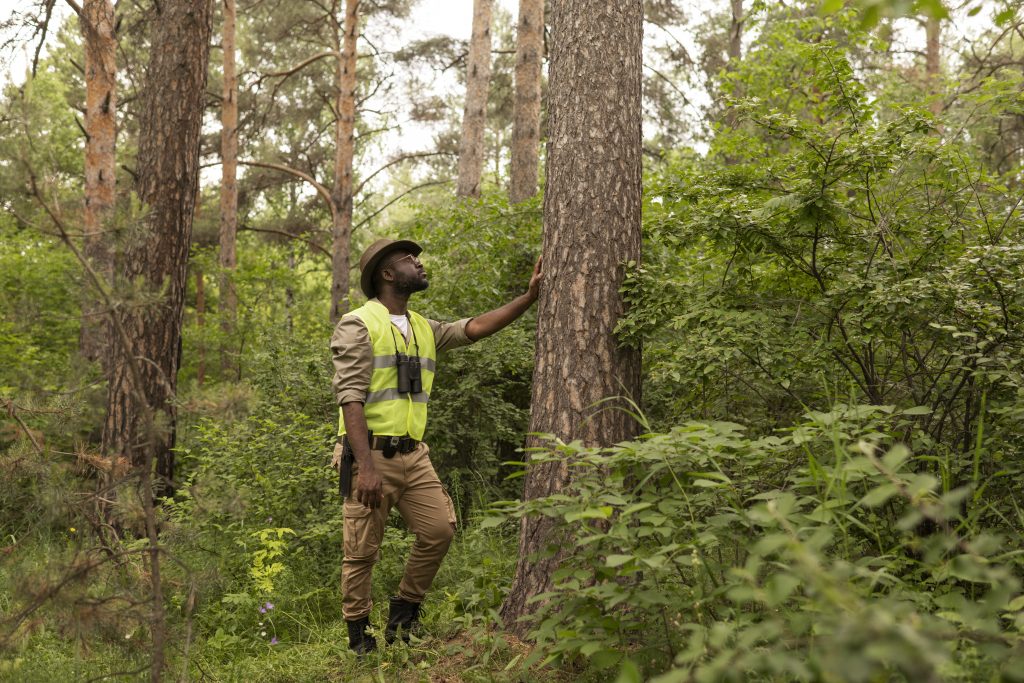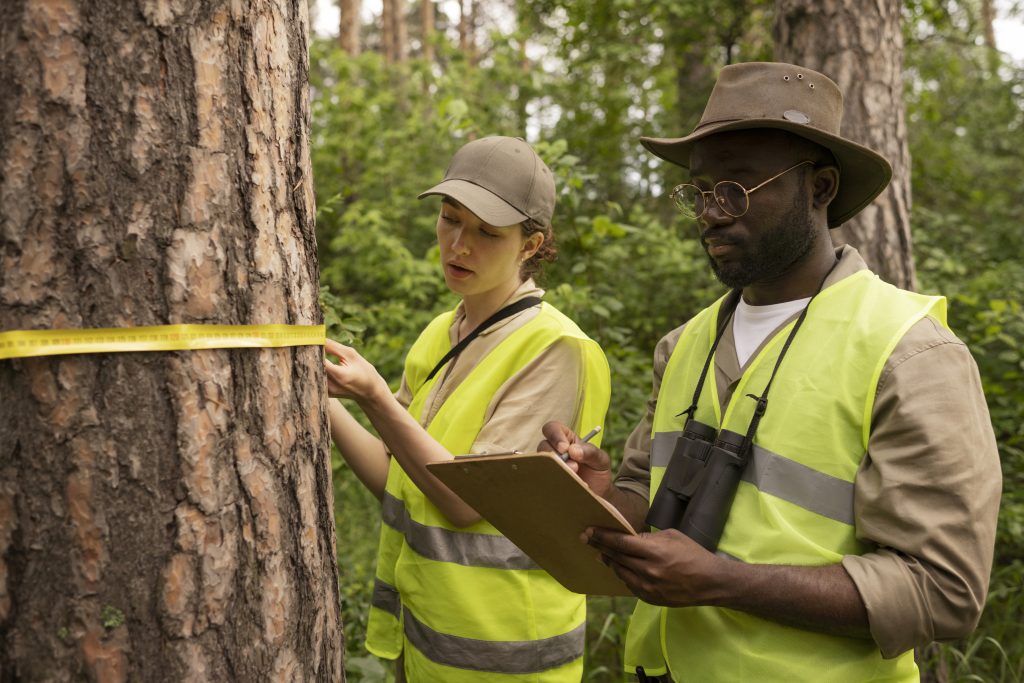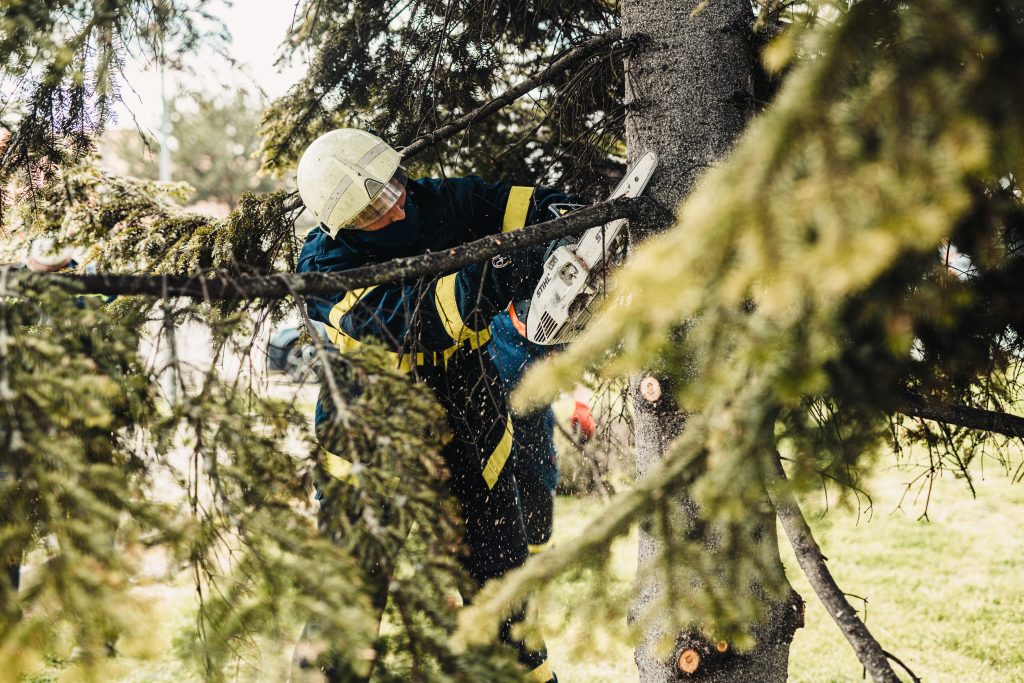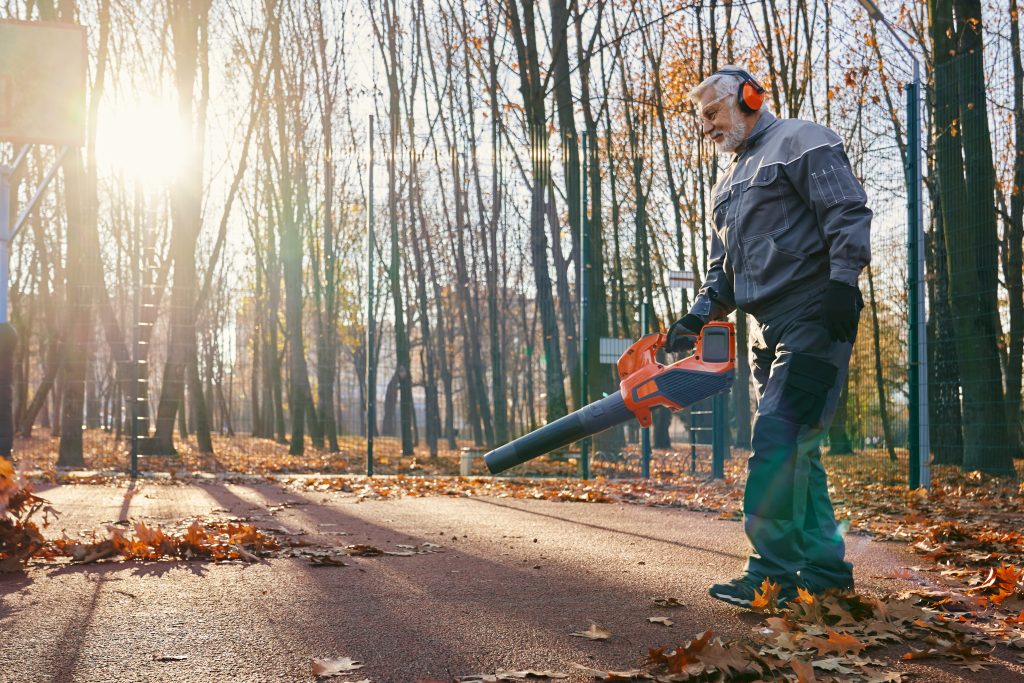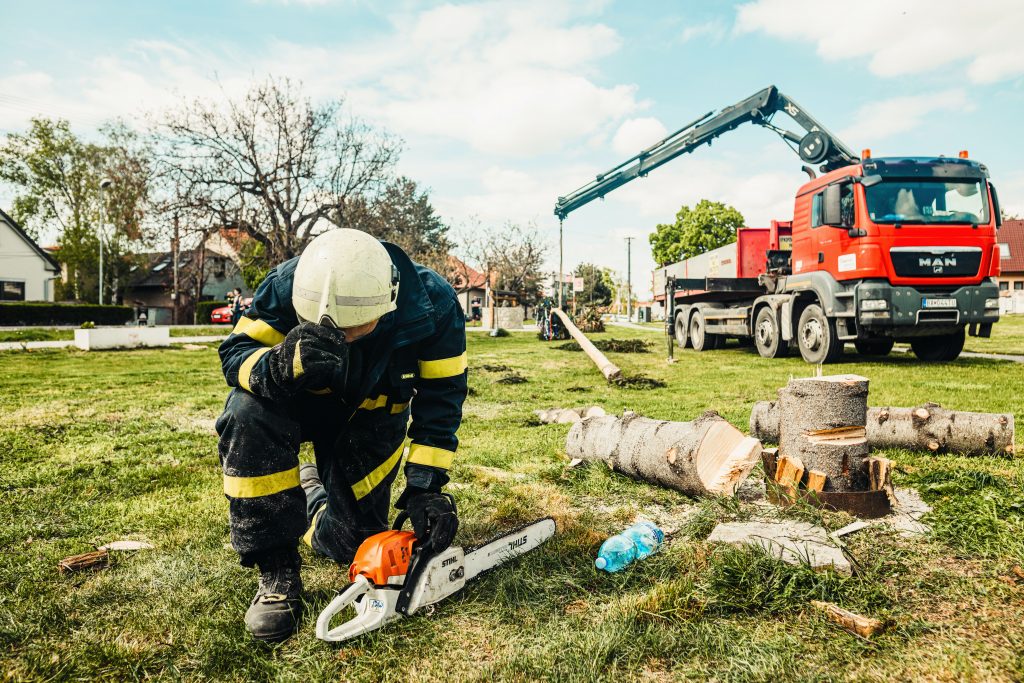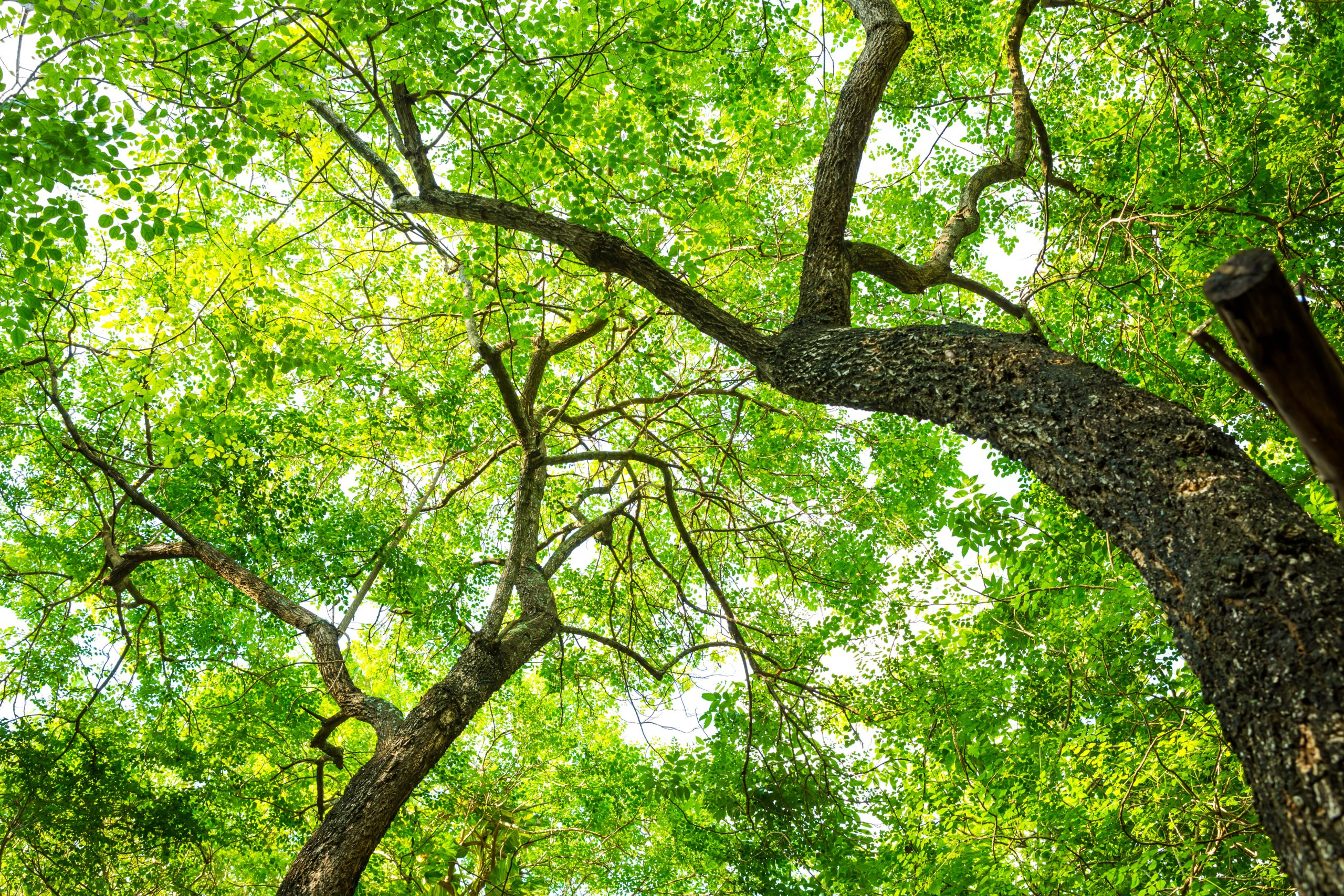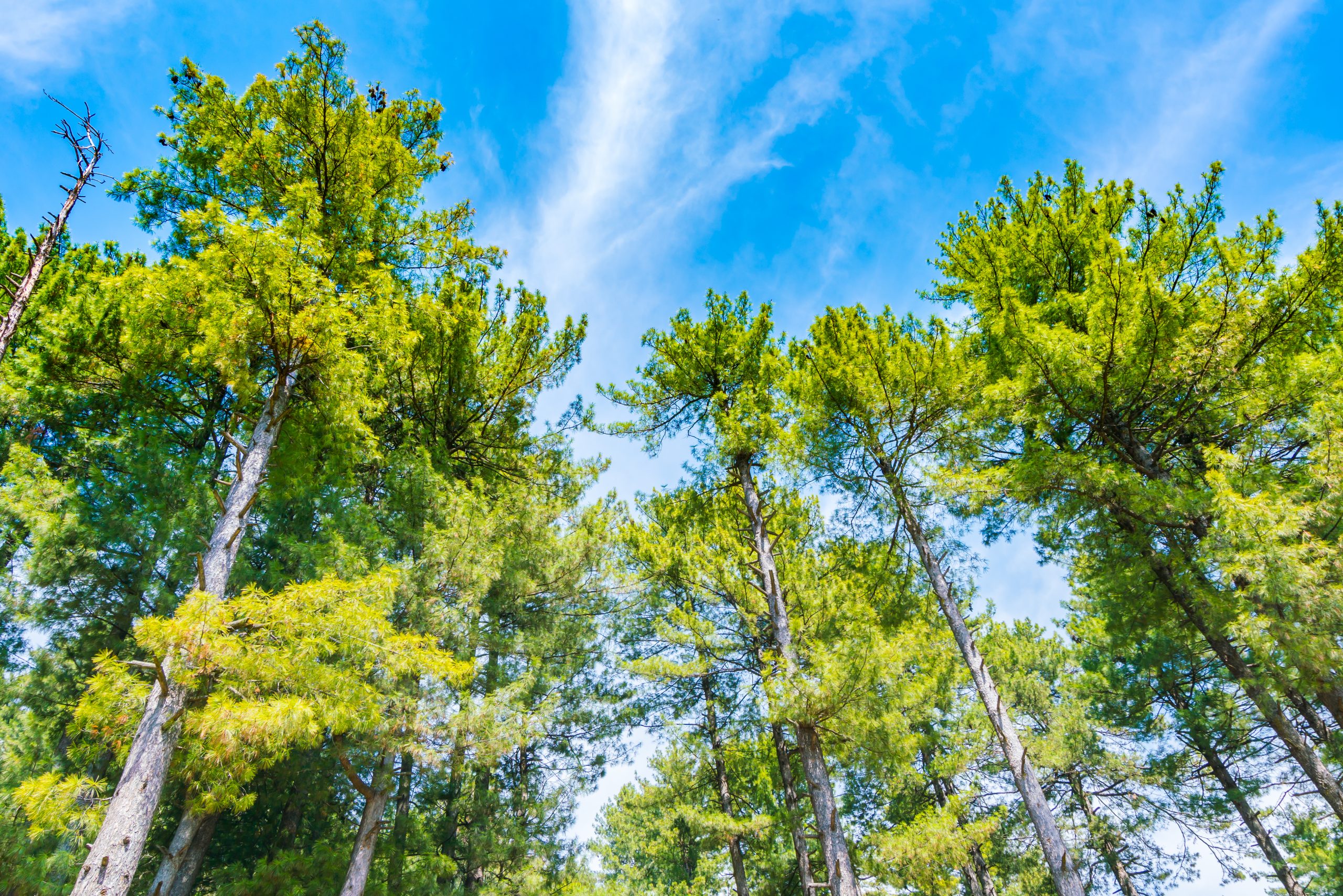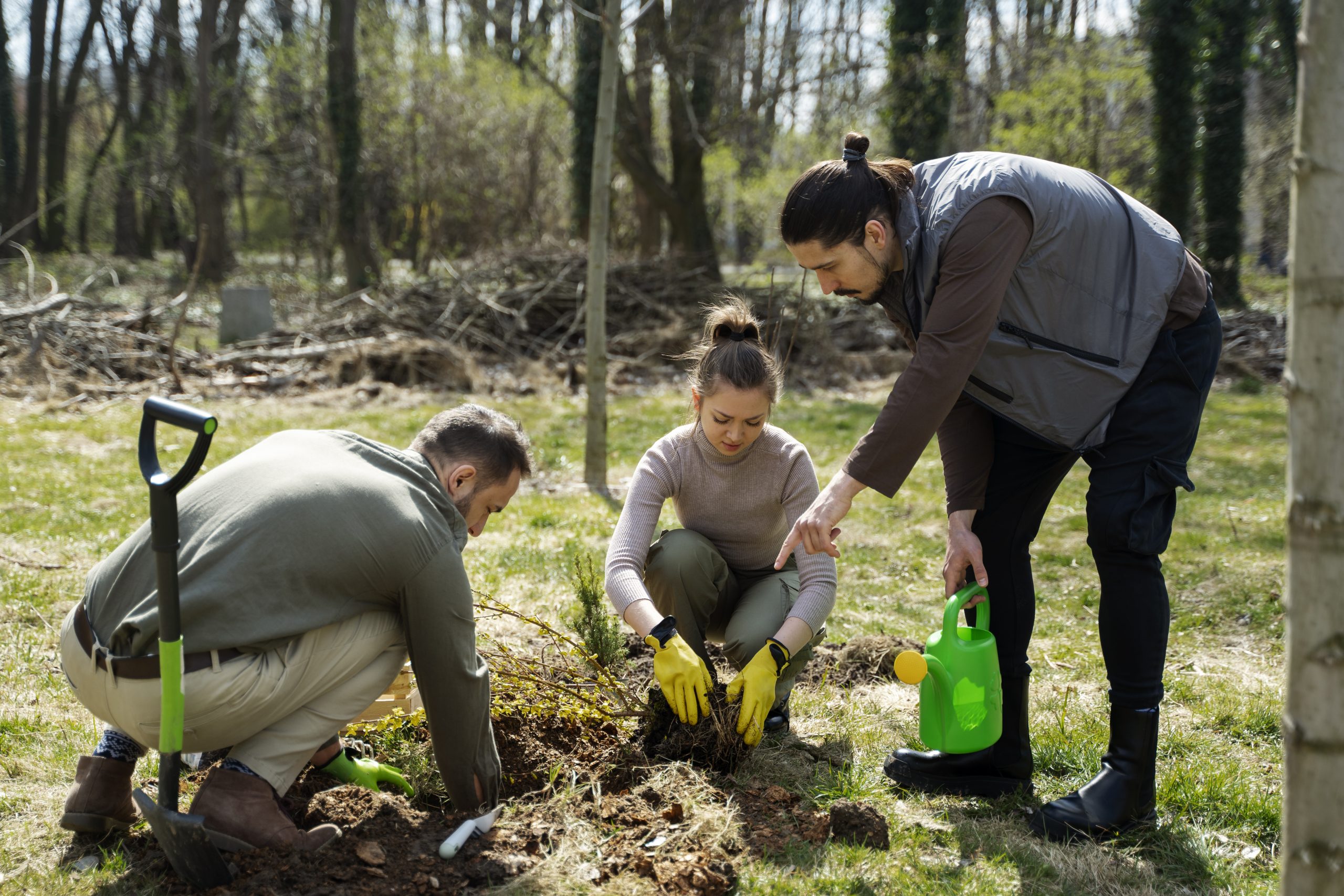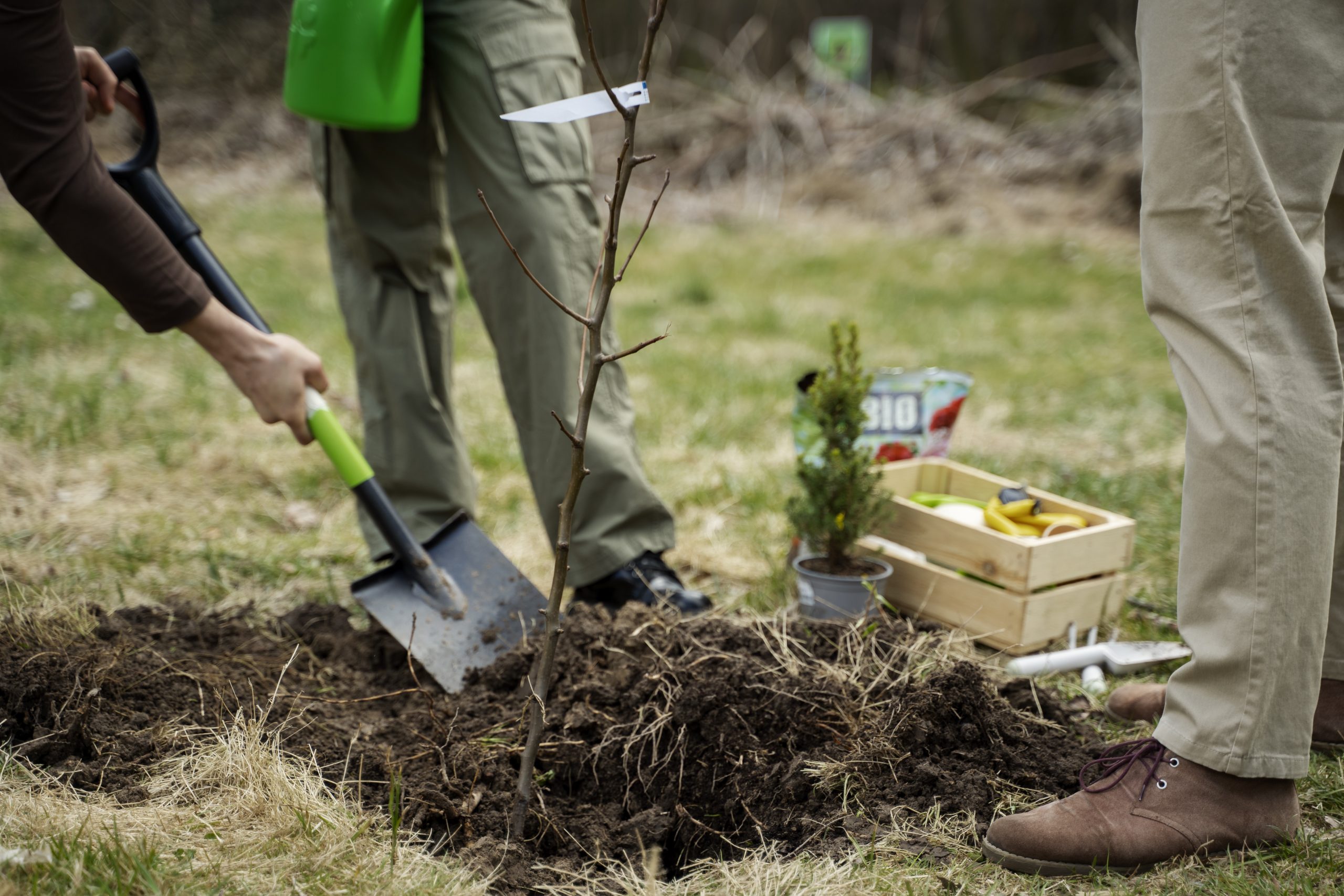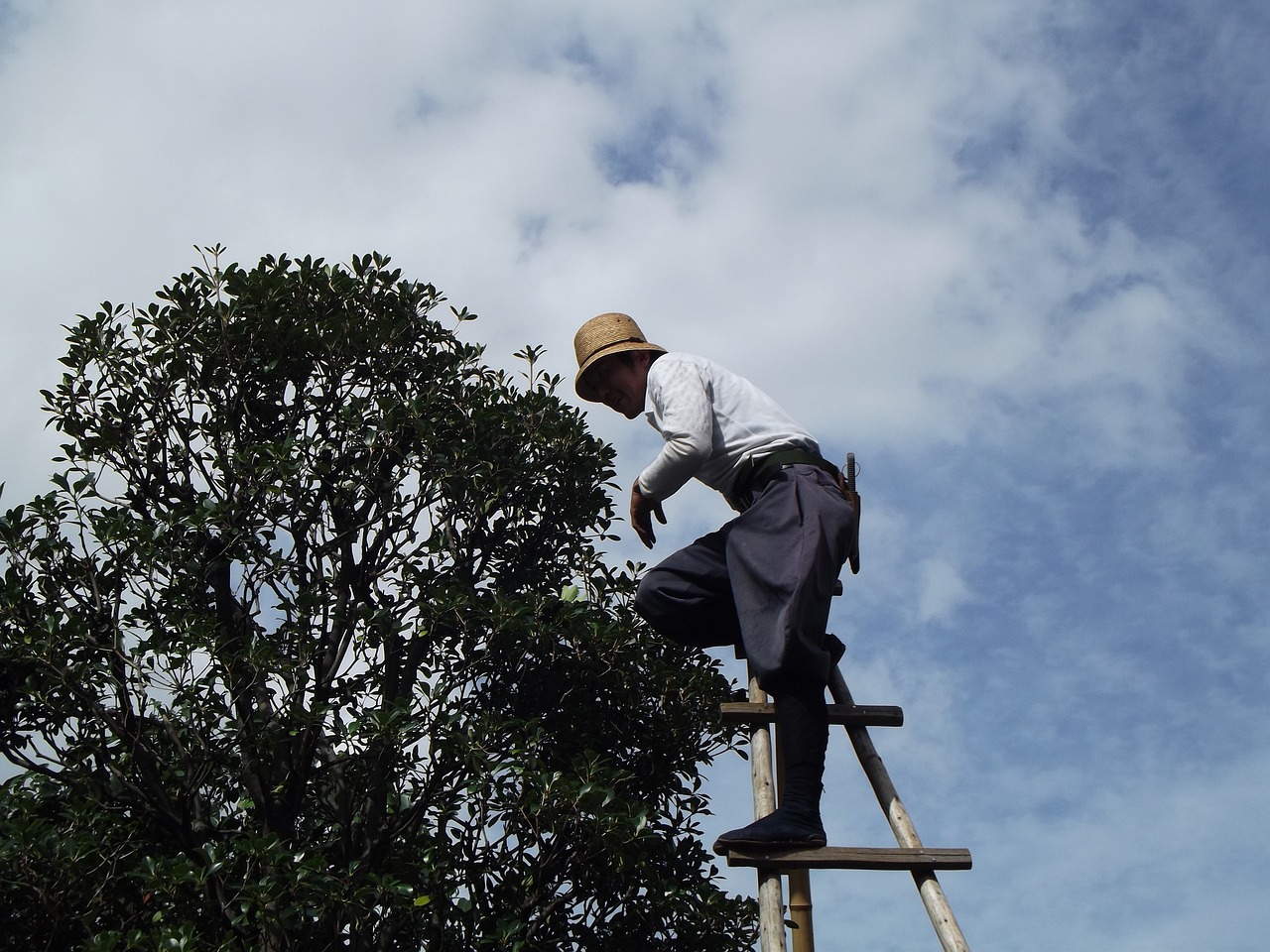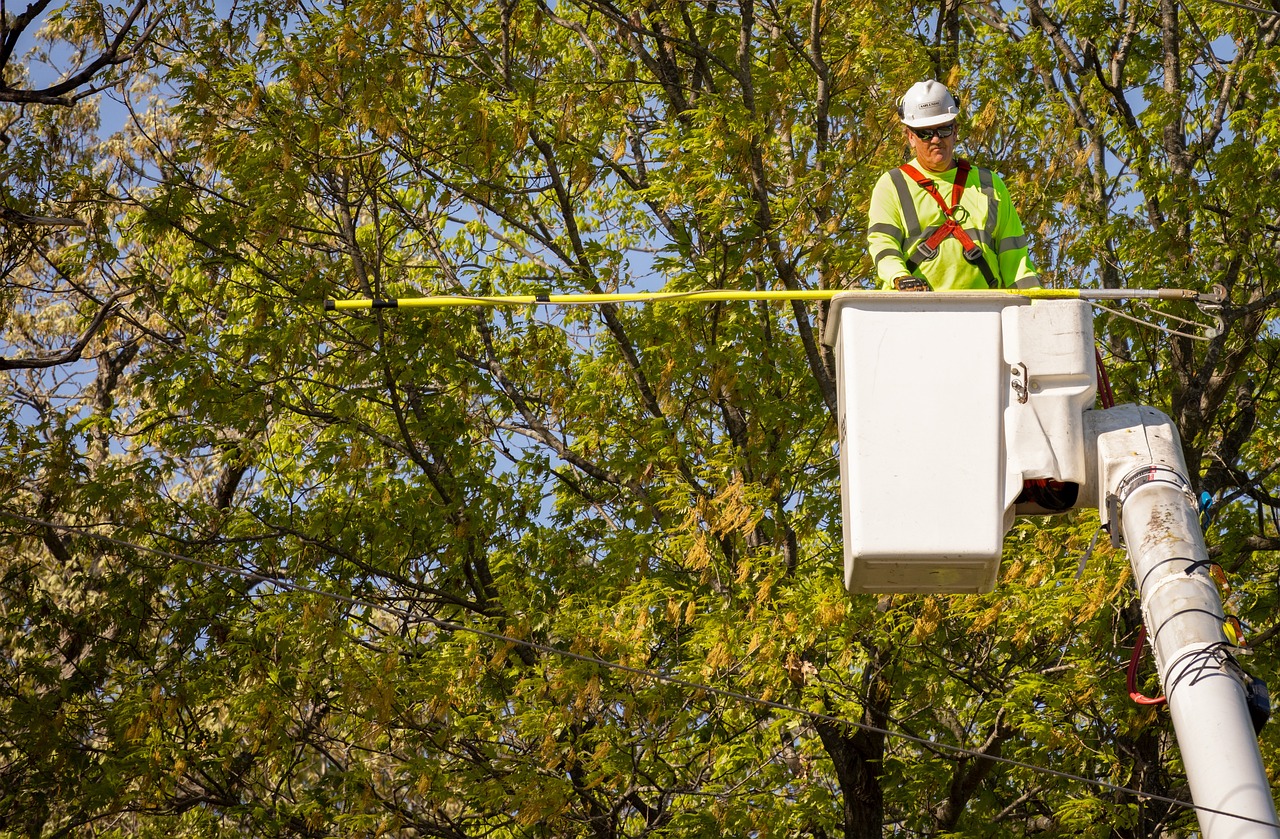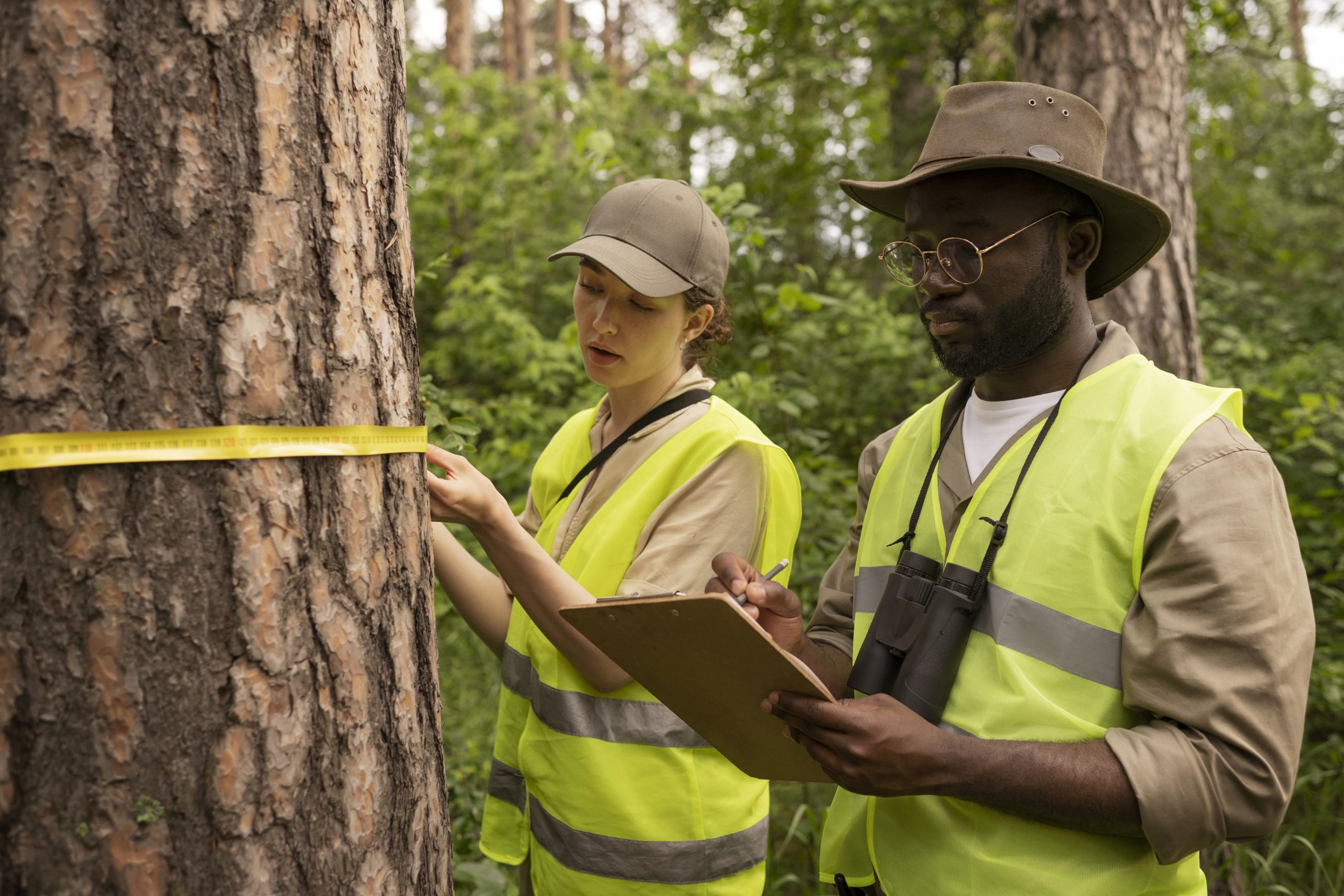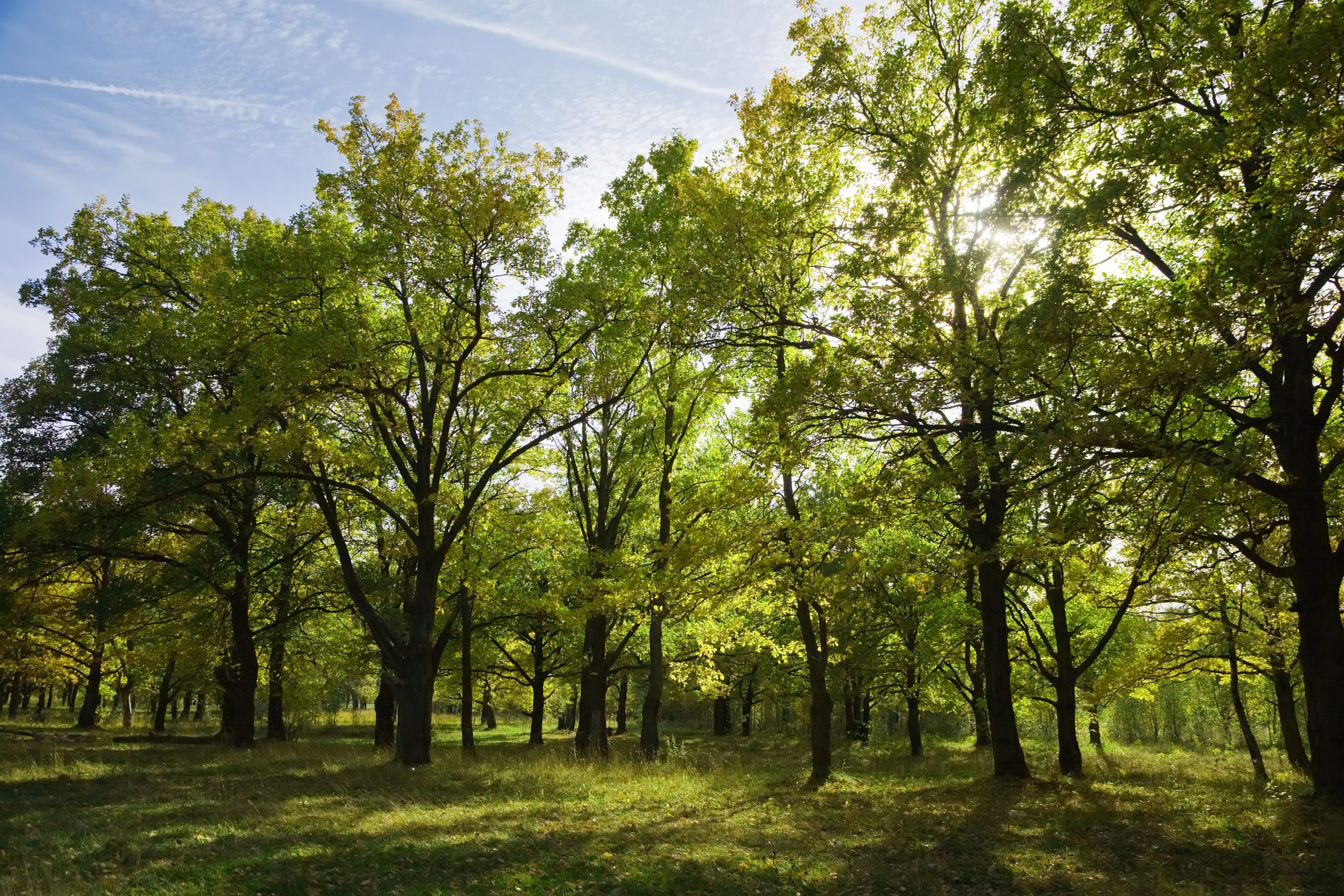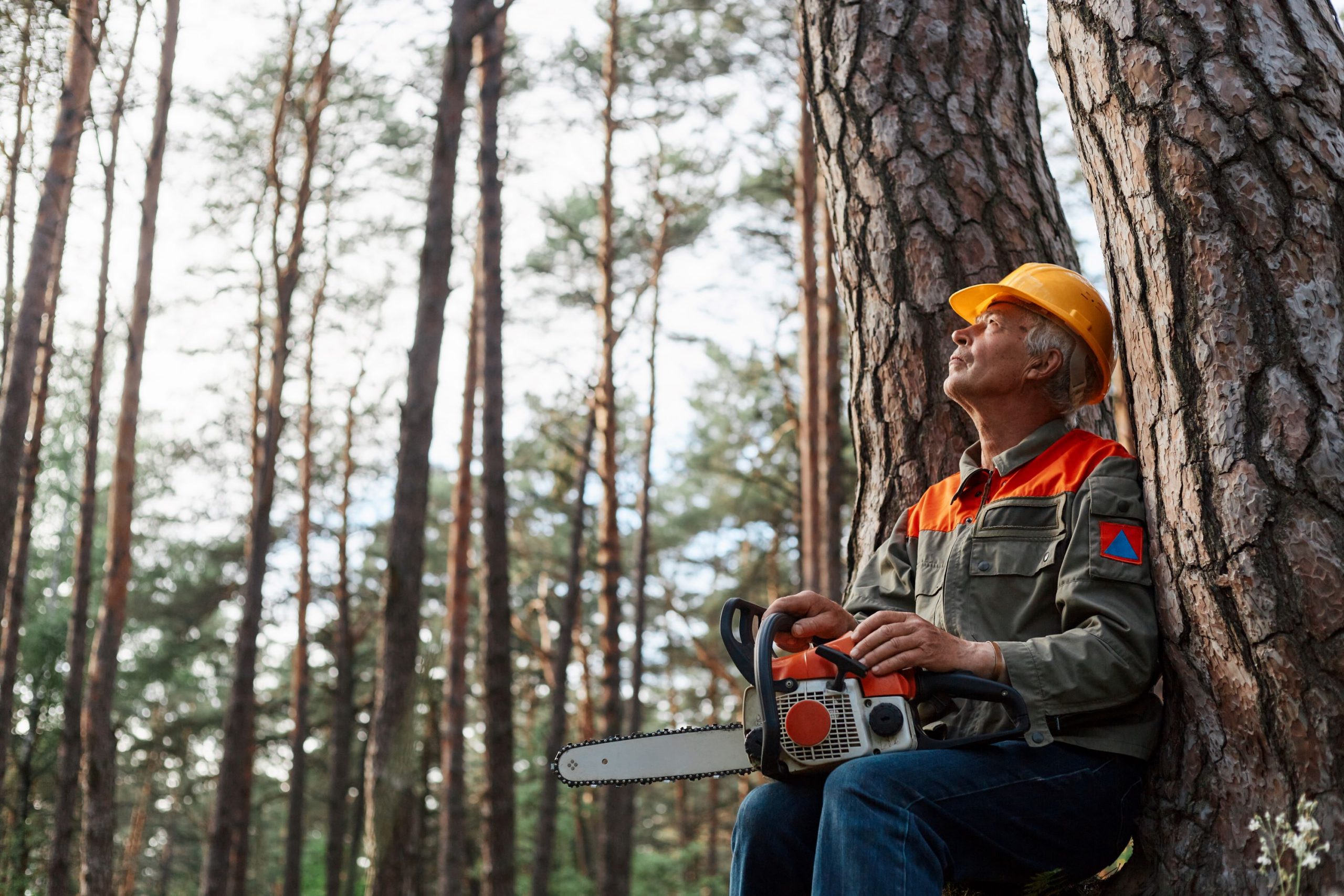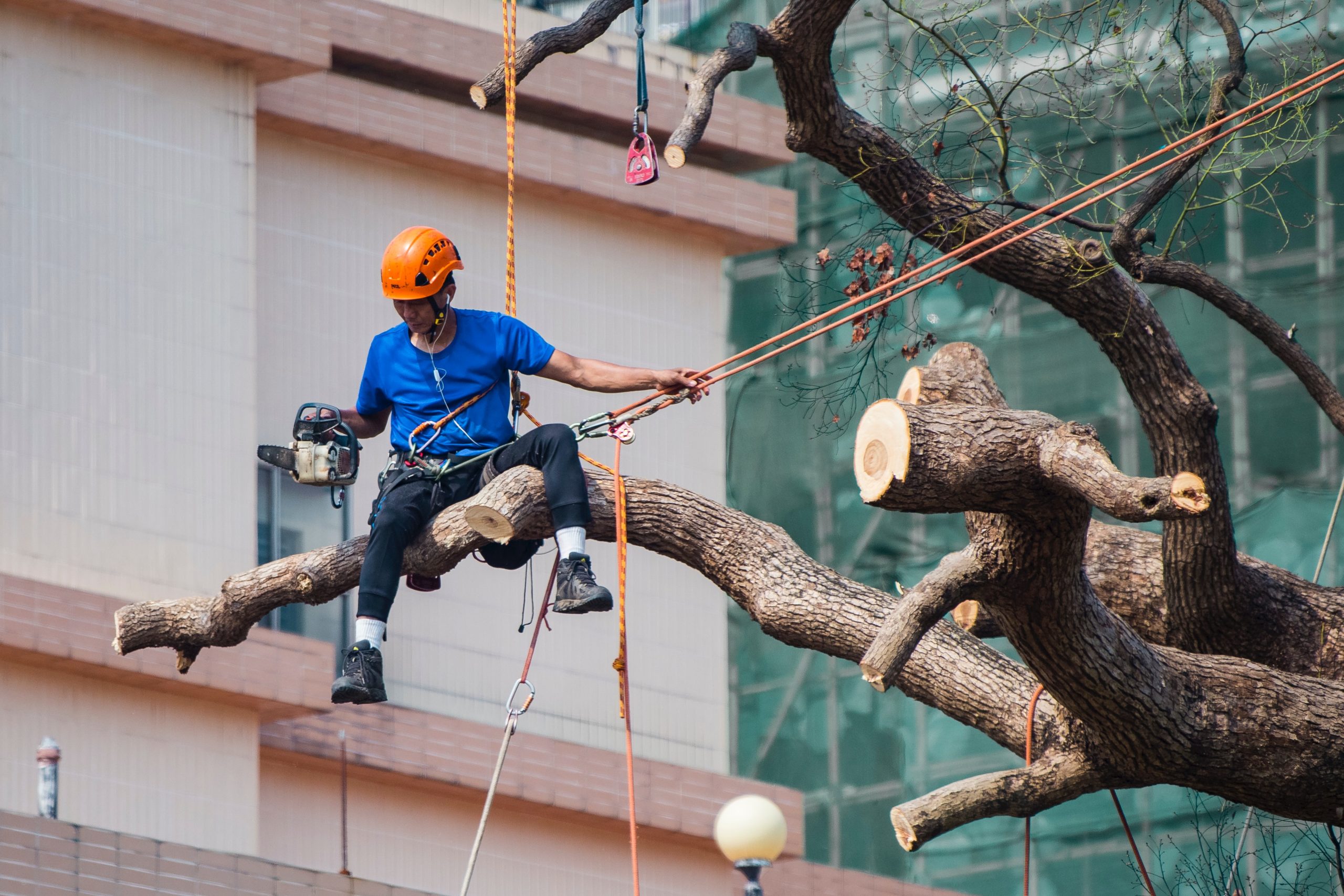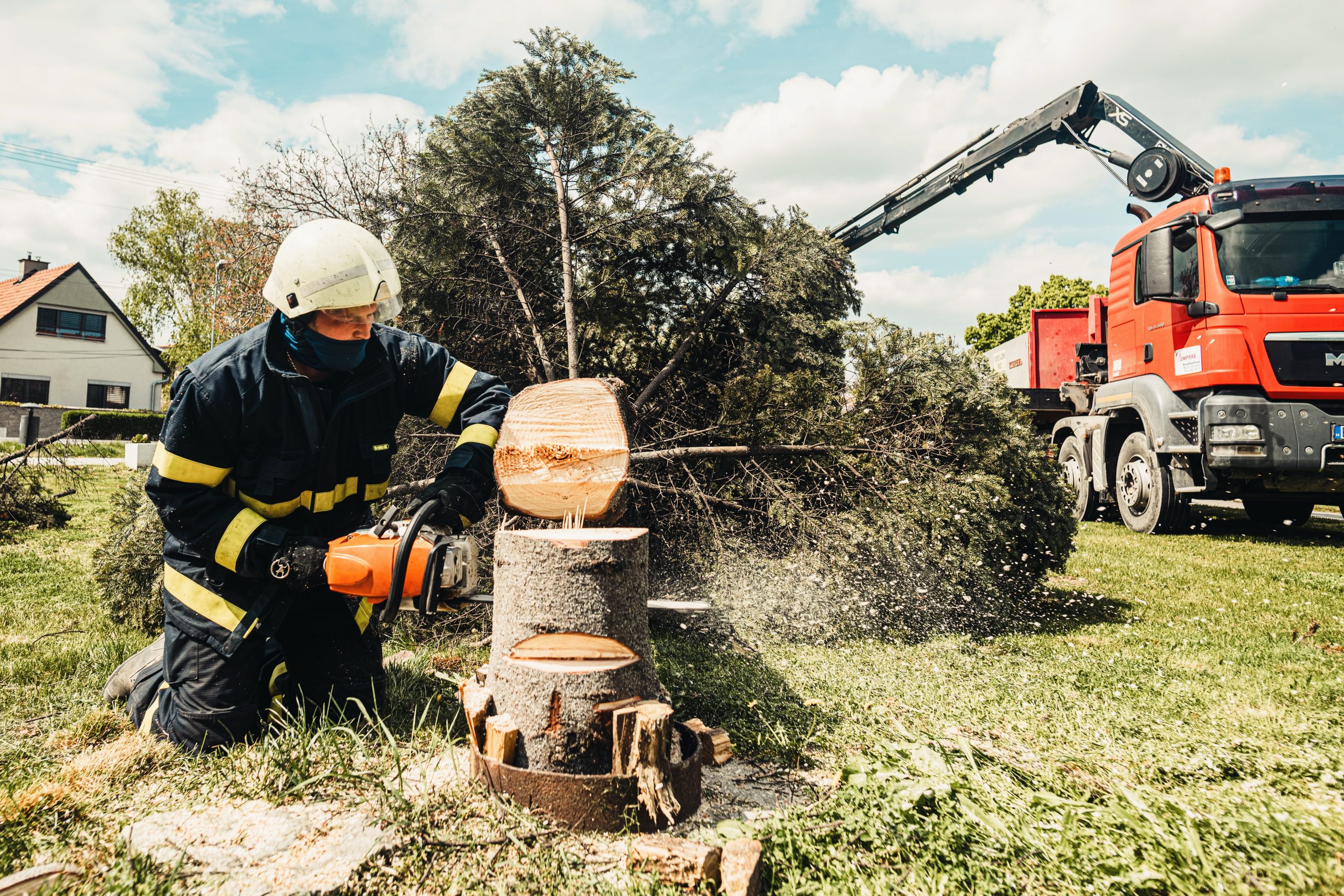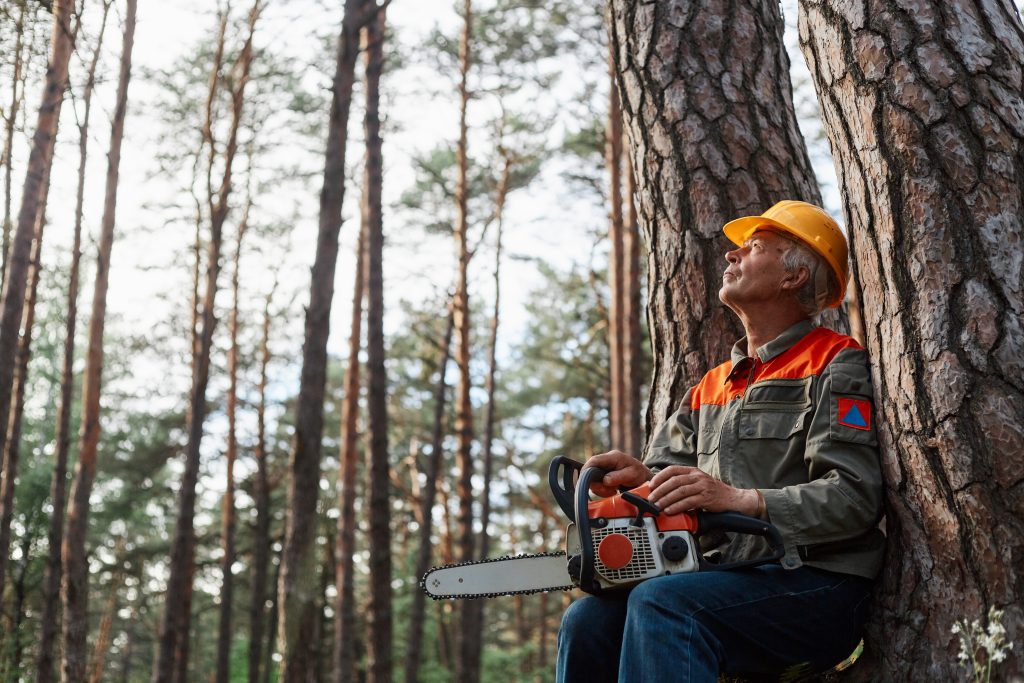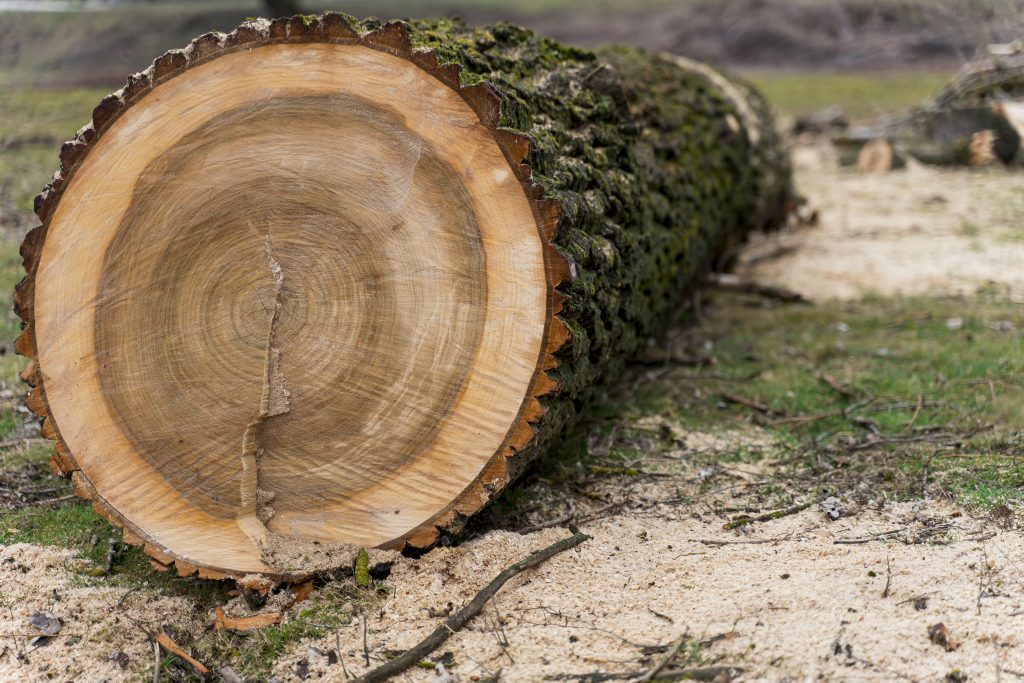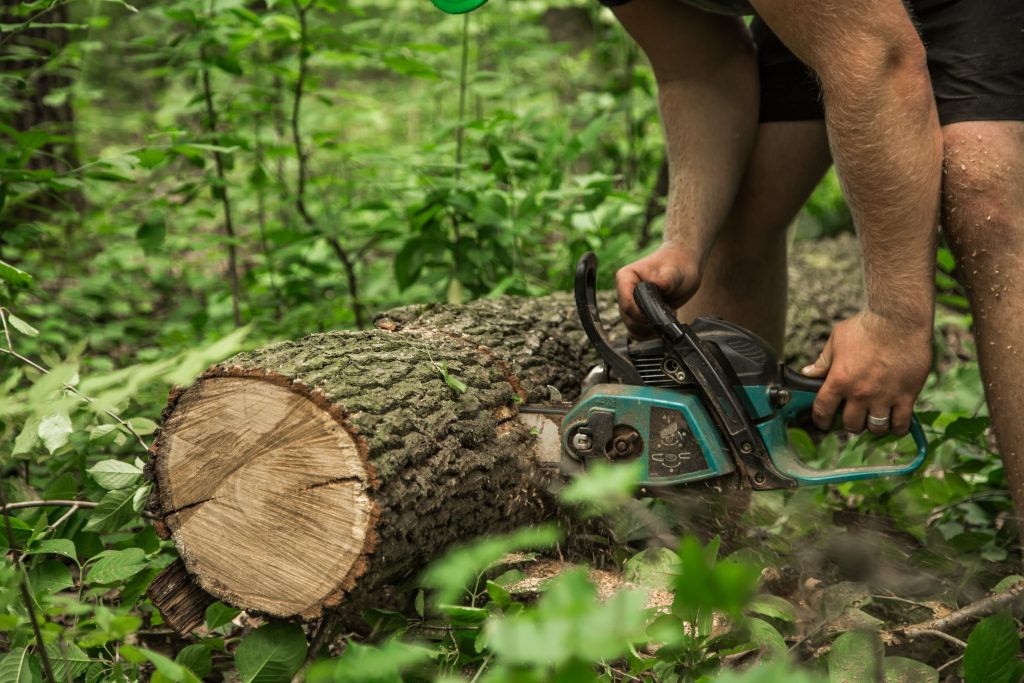How to Quote a Tree Removal Job?
How to Quote a Tree Removal Job?
Are you ready to master the art of quoting a tree removal job? Picture yourself confidently walking through a customer’s yard, assessing the towering trees and envisioning the precise steps needed to safely and efficiently remove them. In this article, we will guide you through the process, sharing expert tips, dos and don’ts, and common pitfalls to avoid. With our step-by-step approach, you’ll be equipped with the knowledge and skills to provide accurate and competitive quotes, ensuring success for your tree removal business.
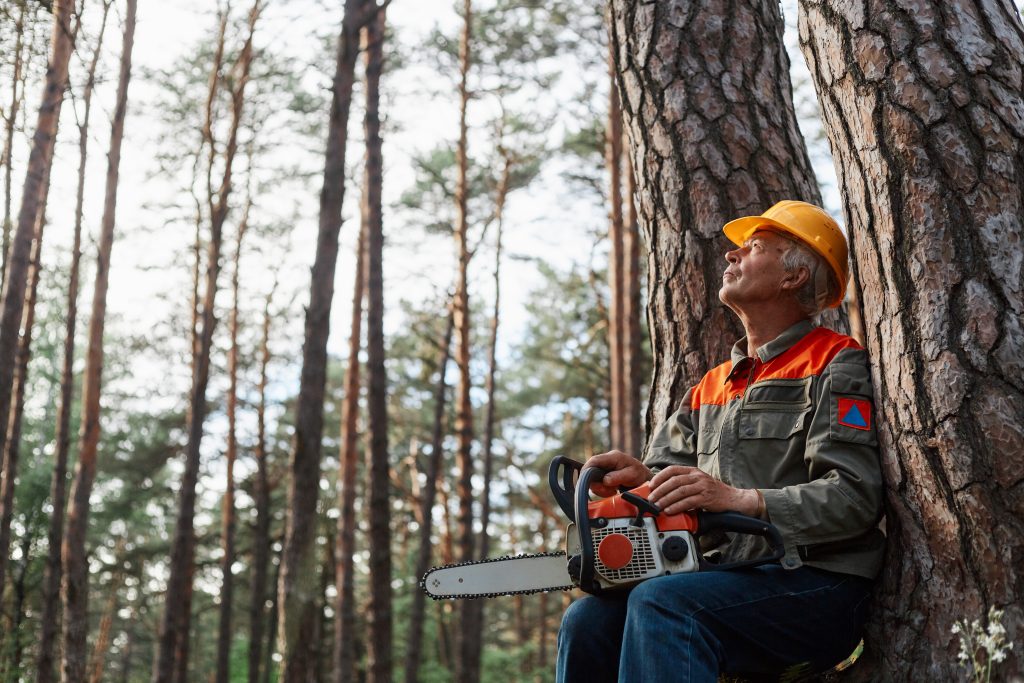
Key Takeaways
- Estimating tree size and complexity is crucial for providing accurate quotes in tree removal jobs.
- Building a strong network and utilizing effective marketing strategies can help attract clients for tree removal jobs.
- Providing exceptional customer service, including clear communication and prompt responsiveness, is important for customer satisfaction.
- Safety, professionalism, and expertise are key factors in providing high-quality tree removal services and building trust with clients.
Introduction: Tree Removal Business
If you’re looking to start a tree removal business, it’s important to understand the basics of the industry. Here are some key points to consider:
- Tree removal equipment: To effectively remove trees, you’ll need the right equipment. This includes chainsaws, wood chippers, stump grinders, and safety gear like helmets and gloves. Investing in quality equipment will ensure efficient and safe tree removal operations.
- Marketing strategies: In order to attract customers and grow your business, you’ll need effective marketing strategies. Utilize online platforms such as social media, websites, and online directories to promote your services. Consider offering discounts or referral programs to encourage word-of-mouth marketing. Additionally, creating professional flyers or business cards can help you reach potential customers in your local area.
- Build a strong network: Networking with other professionals in the industry, such as arborists or landscapers, can lead to valuable partnerships and referrals. Attend industry conferences, join trade organizations, and participate in local events to connect with others in the field.
- Provide exceptional customer service: Building a reputation for excellent customer service is crucial for success in the tree removal business. Communicate clearly with clients, be responsive to their needs, and ensure you leave the job site clean and tidy. Happy customers are more likely to recommend your services to others.
Understanding these basics will set a strong foundation for your tree removal business. Now, let’s delve into the history of the tree removal business and how it has evolved over time.
Tree Removal Business History
To understand the history of your tree removal business, you can research the industry and look into the experiences of successful entrepreneurs. The tree removal industry has experienced significant growth over the years, driven by increasing demand for professional tree services. As urbanization and construction projects continue to expand, the need for skilled professionals to safely remove trees has become paramount. However, along with this growth, tree removal businesses also face various challenges.
One of the main challenges faced by tree removal businesses is the competitive nature of the industry. With the increasing demand, more companies have entered the market, making it crucial to differentiate your business and offer unique services or competitive pricing. Additionally, there are various regulations and permits that need to be obtained before conducting tree removal operations, adding complexity and potential delays to the process.
Another challenge is the physical nature of the work. Tree removal can be physically demanding and requires specialized equipment and training. It is important to invest in proper safety gear and ensure that your employees are well-trained to minimize the risk of accidents or injuries.
In the next section, we will provide you with some tips on how to effectively run your tree removal business and overcome these challenges.
Tips
When it comes to pricing considerations in your tree removal business, there are a few key factors to keep in mind. Firstly, you’ll need to consider the type and size of the tree, as larger or more challenging trees may require additional equipment and manpower. Additionally, you’ll want to factor in any insurance requirements, as having the proper coverage can protect both you and your clients in case of accidents or property damage. Lastly, accurately estimating the size of the tree is crucial for providing an accurate quote, as it will determine the amount of time and resources needed for the job.
Pricing Considerations
You should take into account the size of the tree and the difficulty of access when determining the price for the job. These factors can greatly impact the amount of time and effort required to complete the tree removal safely and efficiently. Additionally, it is important to consider insurance coverage and competitive pricing when providing a quote to your clients. Having the appropriate insurance coverage not only protects you and your employees, but it also instills confidence in your clients that you are a professional and trustworthy tree removal service. Offering competitive pricing will help you stand out in the market and attract more customers. Now, let’s move on to discussing the insurance requirements for tree removal jobs.
Insurance Requirements
It’s important to consider insurance coverage when providing a quote for clients, as it protects both you and your employees. As a tree removal service, having the right insurance coverage is crucial for the success and longevity of your business. Insurance coverage provides liability protection, which safeguards you from potential financial losses in case of accidents or damages that may occur during the tree removal process. This includes injuries to your employees, damages to the client’s property, or any other unforeseen incidents. By having the appropriate insurance coverage in place, you can ensure that you are adequately protected and can confidently offer your services to clients. Now that you understand the importance of insurance coverage, let’s move on to the next step: estimating tree size.
Estimating Tree Size
Now that you have familiarized yourself with the insurance requirements, let’s move on to estimating the size of the trees you will be removing. Accurately estimating tree height and measuring trunk diameter are essential for providing an accurate quote. To estimate the tree height, you can use various methods such as the stick and string technique or using a measuring tape and clinometer. Measure the distance from the ground to the highest point of the tree. Additionally, measuring the trunk diameter at chest height is crucial. This can be done using a tree caliper or by measuring the circumference and dividing it by pi. Once you have gathered this information, you can calculate the complexity and time required for the removal process, allowing you to provide an accurate quote to your potential clients.
Transitioning into the next section on the traits of a successful tree removal business, it is crucial to understand the importance of professionalism and expertise in this industry.
Traits of a Successful Tree Removal Business
One important trait of a successful tree removal business is having a team that is experienced and knowledgeable. When it comes to removing trees, it is crucial to have a team that knows what they are doing. They should be well-versed in the different types of trees, their growth patterns, and the techniques required for safe and efficient removal. Additionally, they should be familiar with the equipment and tools needed for the job. A successful tree removal business also values safety above all else. Their team should be trained in safety protocols and follow them diligently to avoid any accidents or injuries. Furthermore, a successful tree removal business understands the importance of customer service. They should have excellent communication skills and be able to listen to the needs and concerns of their clients. They should be professional, reliable, and respectful throughout the entire process. By possessing these traits, a tree removal business can build a strong reputation and attract more clients. Now, let’s delve into the steps to quote a tree removal job.
Steps to Quote a Tree Removal Job
To accurately assess the cost of removing a tree, you should start by conducting a thorough evaluation of the site and its surrounding conditions. This will allow you to estimate the difficulty of the job and determine the equipment needed. Here are some key factors to consider during your evaluation:
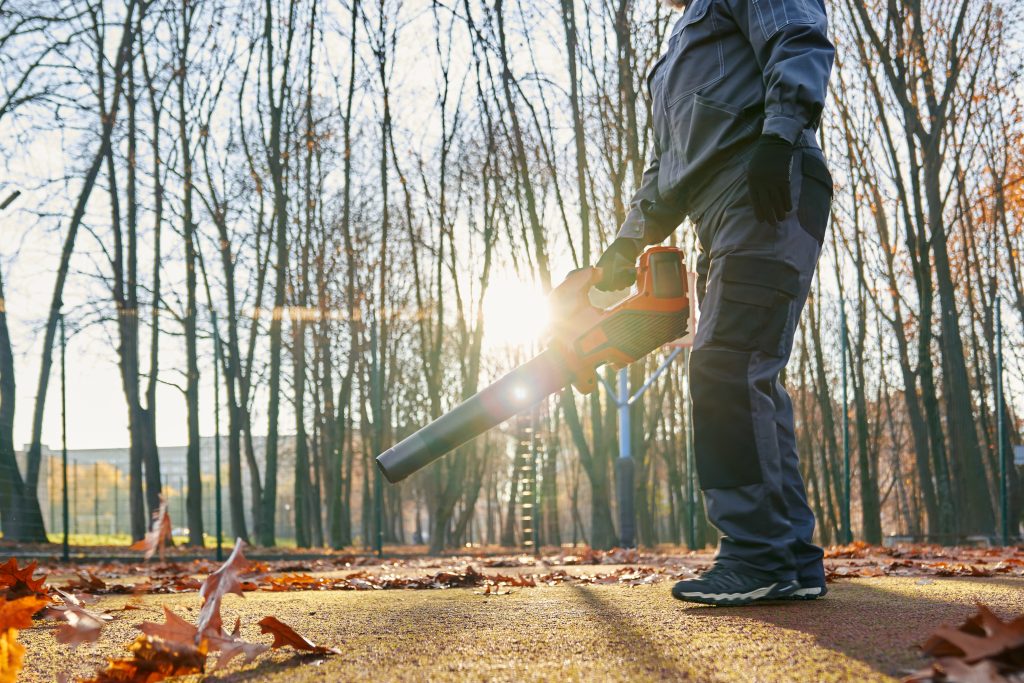
- Tree Size: The size of the tree plays a significant role in estimating the difficulty of the removal. Larger trees may require more advanced equipment and techniques.
- Tree Location: Consider the proximity of the tree to buildings, fences, or other structures. If the tree is close to structures or power lines, additional precautions and equipment may be necessary.
- Tree Health: A healthy tree is often easier to remove than a diseased or decaying tree. The condition of the tree will affect the complexity of the job and the equipment required.
- Access to the Site: Evaluate the accessibility of the site for equipment and machinery. If it is difficult to reach the tree, special equipment or additional labor may be needed.
Goals
When creating a quote for a tree removal project, it is important to establish clear goals to ensure that the client’s needs are met. Setting goals not only helps you stay organized and focused throughout the process, but also allows you to provide a more accurate and tailored quote. Here are some tips to help you define your goals effectively:
| Goals | Tips |
|---|---|
| Understand client’s needs | Take the time to listen to the client’s requirements and concerns. Ask questions for clarity. |
| Assess the tree’s condition | Conduct a thorough inspection of the tree to determine its health, size, and potential risks. |
| Determine necessary equipment | Identify the tools and machinery required for the job based on the tree’s characteristics. |
| Establish a timeline | Create a realistic timeline that considers factors like weather conditions and project complexity. |
Habits for Successful Tree Removal Businesses
Developing good habits is crucial for running a successful tree removal business, as they will help you streamline processes and ensure customer satisfaction. One key habit is successful marketing, which involves promoting your services effectively to attract customers and increase your client base. Utilize various marketing strategies such as social media advertising, search engine optimization, and word-of-mouth referrals to reach a wider audience and showcase your expertise in tree removal. Additionally, focusing on customer satisfaction is vital. Respond promptly to inquiries, provide detailed and accurate quotes, and deliver high-quality service. Establishing good communication with your clients and addressing any concerns promptly will help build trust and loyalty, leading to repeat business and positive referrals. By developing these habits, you will create a solid foundation for a thriving tree removal business.
Now, let’s dive into a real-life story that demonstrates the importance of these habits in running a successful tree removal business.
A Real-Life Story
By effectively marketing your services and prioritizing customer satisfaction, you can build a thriving tree removal business like this real-life success story. One such success story comes from John, a tree removal expert with over 20 years of experience. John started his business from scratch and faced numerous challenges along the way. He had to establish a strong customer base, compete with established companies, and overcome the physical demands of the job. Despite these obstacles, John’s dedication and expertise allowed him to grow his business steadily over the years.
One of the key factors in John’s success was his ability to learn from real-life experiences. He took the time to understand his customers’ needs and preferences, which helped him tailor his services accordingly. He also faced challenges head-on and adapted his strategies to overcome them. For example, when faced with competition from larger companies, John focused on providing personalized service and building strong relationships with his customers. This approach not only helped him retain existing clients but also brought in new business through word-of-mouth referrals.
Transition: Now that you understand the importance of customer satisfaction and real-life experiences in building a successful tree removal business, it’s time to move on to the next crucial aspect – quoting a tree removal job.
Quotes
Now that you have learned about a real-life story involving tree removal, let’s delve into the topic of quotes. When it comes to getting a quote for a tree removal job, there are a few discussion ideas and relevant tips that can help you navigate the process smoothly.
Firstly, it’s important to gather multiple quotes from different tree removal professionals. This will not only give you an idea of the average cost for the job but also allow you to compare the services and expertise offered by each provider.
During the discussion with the tree removal professionals, make sure to ask questions about their experience, qualifications, and the specific steps they will take to remove the tree safely. This will help you gauge their expertise and ensure that the job is done properly.
Additionally, consider the factors that can impact the cost of the tree removal, such as the size of the tree, its location, and any additional services you may require, such as stump grinding or debris removal. Providing as much information as possible during the quote process will ensure that you receive an accurate estimate.
Secrets
It’s vital to understand the secrets that can guarantee a successful experience when having a tree removed. Tree removal is a complex process that requires careful planning and execution. By following these secrets, you can ensure that the job is done safely and efficiently.
Firstly, it’s important to hire a professional tree removal service. They have the expertise and equipment necessary to handle the job properly. Additionally, they will be able to provide you with an accurate quote based on the specifics of the project.
Secondly, make sure to communicate your expectations clearly. Discuss any concerns or special requirements with the tree removal company beforehand. This will help them understand your needs and ensure that they can meet them.
Lastly, be prepared for any unexpected challenges. Trees can be unpredictable, and there may be hidden obstacles such as underground utilities or neighboring structures. By being flexible and adaptable, you can ensure that the tree removal process goes smoothly.
Insights and Best Practices
To gain valuable insights and improve your understanding of the process, it’s essential to learn about the best practices for safely and efficiently removing a tree. When it comes to tree removal, following industry insights and best practices is crucial to ensure the job is done correctly and without any unnecessary risks. First and foremost, it’s important to assess the tree’s condition and determine the safest approach for removal. This involves considering factors such as the tree’s size, location, and any potential hazards in the surrounding area. Additionally, it’s recommended to hire a professional tree removal service that is experienced and equipped with the necessary tools and equipment. They will have the expertise to handle the job safely and efficiently, minimizing the risk of accidents or damage to property. Furthermore, proper disposal of the tree debris is another important aspect of the process. This involves responsibly recycling or disposing of the wood and branches, in accordance with local regulations. By following these best practices and industry insights, you can ensure a safe and efficient tree removal process. Now, let’s delve into the benefits and cost analysis of tree removal.
Benefits and Cost Analysis
If you’re considering removing a tree, you’ll want to understand the benefits and costs associated with the process. Conducting a thorough cost analysis will help you determine the financial implications of tree removal. Factors such as the size, location, and condition of the tree will all influence the cost. Additionally, if the tree is near structures or power lines, the cost may increase due to the need for specialized equipment or extra safety measures. On the other hand, conducting a benefits analysis will allow you to evaluate the advantages of removing the tree. For instance, removing a diseased or dead tree can prevent potential hazards such as falling branches or the tree toppling over during a storm. It can also enhance the aesthetics of your property and improve the overall health of your landscape. By weighing the costs and benefits, you can make an informed decision about whether or not to proceed with the tree removal process.
Understanding the benefits and costs associated with tree removal is just one of the lessons to be learned in the process. Another important consideration is how to accurately quote a tree removal job.
Lessons
When it comes to pricing considerations for your tree removal job, there are several factors you need to take into account. Estimating the time and cost involved is crucial in order to provide accurate quotes to your clients. Additionally, understanding the various factors that can affect pricing, such as the size and type of tree, accessibility, and any additional services required, will help you determine a fair and competitive price.
Pricing Considerations
You should take into account factors such as the size of the tree, its location, and any additional services required when determining the price for the tree removal job. Pricing considerations are crucial in providing an accurate quote to your clients. Estimating tree size is an important aspect of this process. To determine the size of a tree, you can use various methods such as measuring the trunk’s circumference or height. Additionally, consider the tree’s location, as trees in tight spaces or close to buildings may require extra caution and specialized equipment. Other factors like the complexity of the job, disposal fees, and any additional services like stump grinding should also be considered when pricing the tree removal job. By carefully considering these factors, you can provide an accurate and fair quote to your clients.
When it comes to estimating time and cost, there are several factors to consider.
Estimating Time and Cost
Estimating the time and cost of a tree removal project can be challenging due to various factors. To ensure estimating accuracy, it is important to break down the costs associated with the job. First, consider the size and type of tree. Larger trees typically require more time and resources to remove, which can increase the cost. Additionally, the location of the tree plays a role. If the tree is near structures or power lines, more precautions and specialized equipment may be needed, adding to the overall cost. Other factors that can affect the estimate include the complexity of the job, accessibility to the site, and any additional services required, such as stump removal or debris cleanup. Considering these factors will help you provide an accurate cost breakdown for the tree removal project. Moving forward, let’s discuss the various factors that can affect pricing.
Factors Affecting Pricing
Factors such as the size and location of the tree, complexity of the project, and accessibility to the site can all affect the pricing for a tree removal project. When determining the cost of a tree removal job, it is important to consider these factors as they can greatly impact the overall price. The size of the tree plays a significant role, as larger trees require more equipment, manpower, and time to remove safely. The location of the tree also influences the price, as trees in hard-to-reach areas may require additional effort and specialized equipment. Additionally, the complexity of the project, such as the presence of obstacles or nearby structures, can affect the pricing considerations. Taking all these factors into account is essential in providing an accurate and fair quote for a tree removal project. As you move forward to the next section about ‘routines {yt}’, you will learn more about the step-by-step process involved in quoting a tree removal job.
Routines
When figuring out the cost of a tree removal job, it’s important to establish regular routines for accurately estimating the price. Routines are essential for a successful tree removal business, as they ensure consistency and efficiency in the quoting process. One of the key traits of a successful tree removal business is having a systematic approach to estimating costs.
To begin with, it is crucial to gather all the necessary information about the tree and the site. This includes assessing the size, species, condition, and location of the tree. By having a routine of thoroughly inspecting each tree and its surroundings, you can accurately determine the level of difficulty and the equipment required for the job.
Another important routine is to consider the potential hazards and risks associated with the tree removal. Trees located near power lines, buildings, or other structures may require additional precautions and specialized equipment, which can significantly impact the cost. By routinely evaluating the potential risks, you can provide an accurate quote that covers the necessary safety measures.
Pros and Cons
Now that you have established a routine for quoting a tree removal job, let’s discuss the benefits and drawbacks of this process. Quoting a tree removal job allows you to provide your clients with an accurate estimate of the cost and time required for the job. By doing so, you can ensure that both you and your clients are on the same page and avoid any misunderstandings or disputes later on. Additionally, providing a detailed quote can help you stand out from your competitors and build trust with your clients.
However, there are also some drawbacks to consider. Quoting a tree removal job can be time-consuming, especially if you have a large number of requests to handle. It requires careful inspection of the site, consideration of various factors such as tree size, location, and complexity of the job, as well as calculation of the costs involved. Moreover, there is always a chance that unforeseen issues may arise during the job, which can lead to additional expenses and adjustments to the initial quote.
In the next section, we will discuss some dos and don’ts to keep in mind when quoting a tree removal job, which will help you navigate through this process more effectively and ensure a successful outcome.
Dos and Dont’s
To successfully navigate through the process of quoting a tree removal job, it’s important to keep in mind some dos and don’ts. By following these guidelines, you can ensure that you provide accurate and fair quotes to your clients. Here are some common mistakes to avoid when quoting a tree removal job:
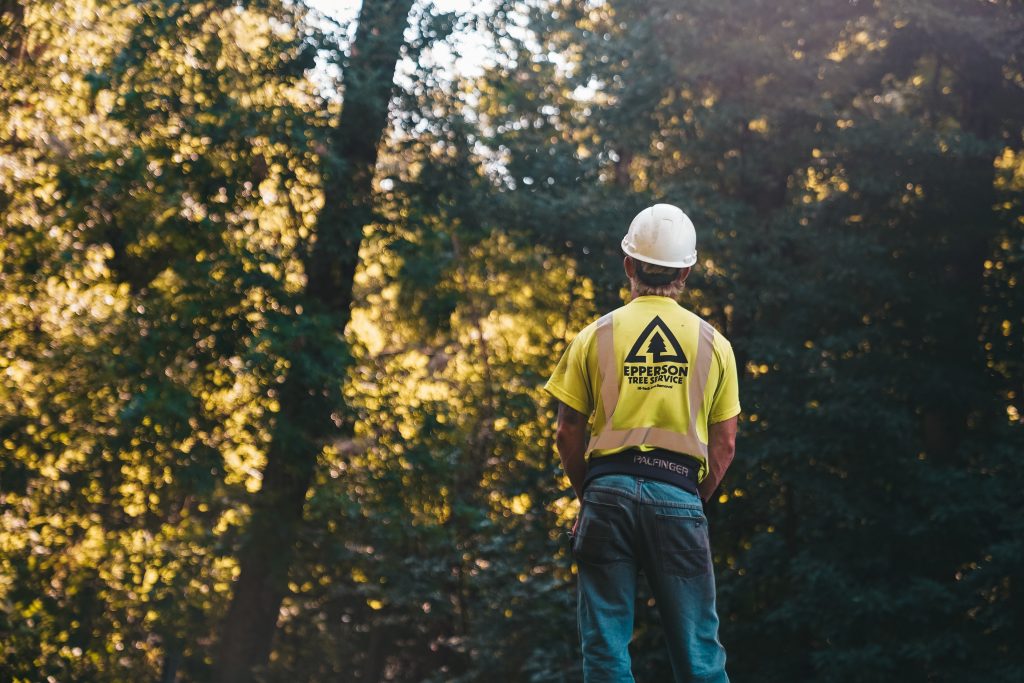
| Do’s | Don’t’s |
|---|---|
| Research local rates | Overestimate the job |
| Consider tree size | Ignore potential obstacles |
| Assess accessibility | Neglect to include cleanup costs |
| Account for disposal fees | Underestimate equipment needed |
| Factor in labor costs | Exclude insurance costs |
One of the most common mistakes in quoting a tree removal job is overestimating the job. While it’s important to be thorough and account for all potential factors, such as tree size and accessibility, it’s equally important not to inflate the quote unnecessarily. On the other hand, neglecting to include important costs, such as cleanup or disposal fees, can lead to unexpected additional expenses for both you and your client.
Mistakes to Avoid
One of the most common errors to steer clear of when providing quotes for removing trees is overestimating the extent of the work. This mistake can lead to inflated prices, which can deter potential clients from hiring your services. To avoid this, it is crucial to assess the tree and its surroundings thoroughly. Take note of any obstacles, such as power lines or structures, that may require additional precautions or equipment. Another mistake to avoid is underestimating the time and effort required to complete the job. Failure to accurately estimate the labor involved can result in delays and increased costs. Additionally, pricing strategies play a vital role in providing accurate quotes. It is essential to consider factors such as the size and species of the tree, the complexity of the job, and any additional services needed, such as stump removal or debris hauling. By carefully evaluating these factors and using a fair pricing strategy, you can provide accurate and competitive quotes to potential clients. Now, let’s explore some key takeaways from this discussion.
Key Takeaways
Take note of the mistakes to avoid when providing quotes for removing trees and ensure that you accurately assess the extent of the work, estimate the labor involved, and consider all relevant factors for a competitive pricing strategy. When quoting a tree removal job, there are several key takeaways to keep in mind.
Firstly, it is important to conduct a thorough assessment of the tree and its surroundings. Identify any potential hazards or obstacles that may affect the removal process. This will help you determine the equipment and manpower needed for the job.
Secondly, consider the size and condition of the tree. Larger trees or those that are diseased or damaged may require additional expertise and resources, which can impact the overall cost.
Additionally, take into account the accessibility of the tree. If the tree is located in a hard-to-reach area, it may require specialized equipment or extra labor, leading to higher pricing.
Lastly, factor in the disposal of the tree debris. Determine if the client wants the debris removed or if they will handle it themselves. This will influence the overall quote.
Specific Action Steps for Quoting a Tree Removal Job
When quoting a tree removal job, there are several key points to consider. Firstly, pricing considerations play a crucial role in determining the cost of the job. Assessing the size of the tree accurately is also important, as it directly impacts the complexity and resources required for the removal process. Additionally, estimating the time requirements allows for better planning and scheduling of the job, ensuring efficient and timely completion. By taking these factors into account, you can provide accurate and professional quotes for tree removal jobs.
Pricing Considerations
It’s important to consider various factors when determining the price for a tree removal job. One of the key considerations is insurance coverage. As a professional tree removal service, you need to have adequate insurance to protect yourself and your clients in case of any accidents or damages that may occur during the job. This will not only give your clients peace of mind but also demonstrate your professionalism and commitment to safety. Additionally, pricing strategies play a crucial role in quoting a tree removal job. You need to take into account the complexity of the job, the equipment required, the time it will take, and any additional services such as stump grinding or debris removal. By carefully considering these factors, you can provide accurate and fair pricing to your clients. Now, let’s move on to assessing tree size, which is another important aspect of quoting a tree removal job.
Assessing Tree Size
Now that you have considered the pricing factors, the next step in quoting a tree removal job is assessing the size of the tree. This involves evaluating both the tree’s height and its overall health. To accurately determine the height of the tree, you can use various methods such as measuring tape, a clinometer, or even an app on your smartphone. Additionally, it is important to closely inspect the tree’s health. Look for signs of disease, decay, or structural damage, as these factors can affect the complexity of the removal process. By thoroughly assessing the tree’s size and health, you can provide a more accurate quote for the job. Moving forward, let’s discuss how to estimate the time requirements for the tree removal.
Estimating Time Requirements
To accurately estimate how long it will take to complete the task, you can consider factors such as the tree’s size, complexity of the removal process, and the number of workers available. Estimating the time requirements for a tree removal job requires a combination of experience and effective time management techniques. Firstly, the size of the tree plays a crucial role in determining the duration of the job. Larger trees may require more time for cutting and removal. Secondly, the complexity of the removal process should be taken into account. Trees located near structures or power lines may require additional precautions and specialized equipment, which can extend the timeline. Lastly, the number of workers available can significantly impact the duration of the job. More workers can divide the tasks and accelerate the process. By carefully considering these factors, you can develop accurate time estimates and effectively manage your tree removal projects.
Frequently Asked Questions
What Are the Legal Requirements for Operating a Tree Removal Business?
To operate a tree removal business, you must meet legal requirements and have insurance coverage. These requirements ensure compliance with safety regulations and protect you from potential liabilities. Make sure to research and fulfill all necessary obligations.
How Do I Determine the Appropriate Equipment Needed for a Tree Removal Job?
To determine the appropriate equipment for a tree removal job, consider the size and location of the tree, as well as any potential obstacles. Evaluating these factors will help you estimate the cost and choose the right tools for the job.
What Are Some Common Challenges or Obstacles That Tree Removal Businesses Face?
When quoting a tree removal job, challenges and obstacles may arise, such as difficult access to the tree, nearby structures, or power lines. You must consider these factors to provide an accurate and safe quote.
What Are Some Effective Marketing Strategies to Attract Clients for Tree Removal Services?
To attract clients for tree removal services, you need effective marketing strategies. By showcasing your expertise, offering competitive pricing, and targeting the right audience through online advertising and networking, you can generate interest and grow your customer base.
How Can a Tree Removal Business Ensure Safety and Minimize Risks During the Job?
To ensure safety and minimize risks during a tree removal job, you need to implement proper safety measures and risk mitigation strategies. This includes conducting thorough site assessments, using appropriate equipment, and following industry best practices.
If you need a tree service in Utah, you can call:
Truco Services, Inc.
4640 Commerce Drive
Murray, Utah 84107
(801) 466-8044
https://truetreeservices.com/
[geocentric_weather id=”45ff4ccd-3d3f-498e-b0b9-91aaaf766bc4″]
[geocentric_about id=”45ff4ccd-3d3f-498e-b0b9-91aaaf766bc4″]
[geocentric_neighborhoods id=”45ff4ccd-3d3f-498e-b0b9-91aaaf766bc4″]
[geocentric_thingstodo id=”45ff4ccd-3d3f-498e-b0b9-91aaaf766bc4″]
[geocentric_busstops id=”45ff4ccd-3d3f-498e-b0b9-91aaaf766bc4″]
[geocentric_mapembed id=”45ff4ccd-3d3f-498e-b0b9-91aaaf766bc4″]
[geocentric_drivingdirections id=”45ff4ccd-3d3f-498e-b0b9-91aaaf766bc4″]
[geocentric_reviews id=”45ff4ccd-3d3f-498e-b0b9-91aaaf766bc4″]
